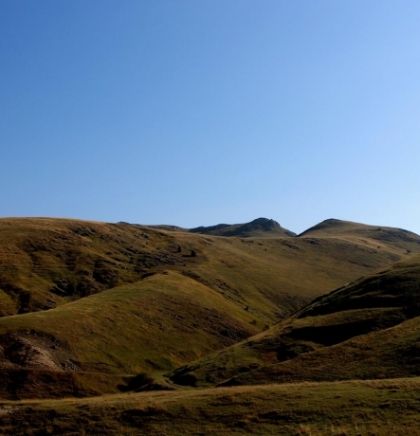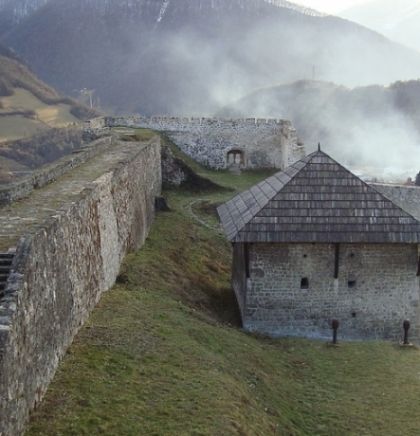The history of Sarajevo
22.12.2017 at 10:51
- Attractions
- 0
Situated on the convergence of two major water basins along the valleys of the Bosnia and Neretva rivers, which connect northern Europe with the Mediterranean Sea, its location in the heart of the Balkan Peninsula served as a gateway for the peoples of Greece and Asia Minor migrating towards West Central Europe and vice versa since ancient times. The first known human settlements date back almost 5,000 years. At Butmir (near Sarajevo International Airport) one of the most interesting and rich Neolithic findings in the Balkans was discovered.
The Illyrians
The Illyrians lived in this territory at the end of the Bronze Age, and remains of their settlements have been located in many areas around Sarajevo. When the Romans conquered the Illyrians in the 1st century AD, they established their headquarters near the thermal springs of what is today known as Ilid`a. The remains of Roman villas, baths, mosaics and sculptures can still be seen there.
Arrival of Slavs
When the Slavic tribes from the north arrived in the 7th century, Slav culture and state models began to dominate. In the 12th century Bosnia gradually established itself as a regional power, with its territorial expansion culminating in the 14th century. A major centre of the Bosnian state was established in the area of present-day Sarajevo, where the Vrhbosna region - with the fortified cities of Hodidjed, Kotorac and Vrhbosna as well as Trgoviste - was situated.
Ottoman Era
In the middle of the 15th century Sarajevo was annexed by the Ottoman Empire. The Ottomans asserted great influence in Sarajevo decades before Bosnia was officially conquered. In the early years after the Ottoman invasion the city of Saraj-ovasi (saraj meaning castle or palace and ovas meaning field) is mentioned for the first time. Sarajevo became the first Ottoman administrative and military base in Bosnia, and soon afterwards the centre of the Bosnian Sandzak (the largest territorial sub-division in the Ottoman Empire). In this newly founded city emerged the first leather craftsmen, blacksmiths, saddlers, millers and bakers. Life in the city, both from an economical and cultural point of view, developed at an increasingly rapid pace during the 16th century. Many bridges were built over the Miljacka River that runs through the heart of the city; the Kozija Cuprija, Cehaja and Latinska Cuprija attest to the magnificence of oriental architecture. On the right bank of the river flourished the Bascarsija quarter which became the social, economical and cultural centre of the young oriental city and the largest commercial centre in the central Balkans.
The caravans arriving from Venice, Vienna, central Europe, the Mediterranean and the east were accommodated in one of the 50 inns of Sarajevo, known as 'han'. The most famous was Morica han which was built at the end of the 16th century. Today it is a tourist attraction, offering an authentic glimpse of Sarajevo's past, but in earlier times it offered facilities such as guest rooms, a café on the first floor and a courtyard with a porch for loading and unloading goods, warehouses and horse stables. By the 16th century the city had established regular contacts with other European cities and began to resemble a true metropolis. The vision of the city expanded with Ottoman rule. One of the distinctive features of Ottoman rule was tolerance of other religious creeds, particularly compared to the wretched record of religious persecution by most European powers of that time. The Orthodox, Catholics and the Sephardic Jews (expelled from Spain in 1492 and resettled in Sarajevo) lived and worked together in relative harmony in the Bascarsija quarter. This laid the foundation for the cultural pluralism for which the city is known today. Sarajevo is one of the few European cities that has had a water supply system for more than 400 years. In the 17th century a Turkish travel writer named Evlija Celebi pointed out the existence of 110 drinking-water fountains in his journal.
Austro-Hungarian Period
Sarajevo experienced for the first time the full current of European culture during the 40 years of Austro-Hungarian administration. New schools and European-structured scientific institutes were opened and Sarajevo's young intellectuals were educated in major cities around Europe. The city also enjoyed strong economic, cultural and political development; the first modern industries appeared: a tobacco factory in 1880, a carpet-weaving factory in 1888, a furniture factory in 1869 and a soap factory in 1894, in addition to the power plants, textile and food industries. The first railway was also officially opened and mainly used to exploit Bosnia's rich natural resources. Alongside these developments, there was growing resistance to yet another occupying power in Sarajevo. The rebellions in the last years of Ottoman dominion in Bosnia and Herzegovina set the stage for a strong resistance movement. On June 28 1914 a young Serbian nationalist, Gavrilo Princip, assassinated Archduke Franz Ferdinand, the Austro-Hungarian heir, and his wife Sofia. Austria then declared war on Serbia. Russia, having had its eyes on the Balkans for some time, sided with Serbia and declared war on Austria. It was this event that ignited World War I.
Tito's Yugoslavia
After World War II and victory by Tito's partisans, Sarajevo developed rapidly. The population grew considerably and the territory expanded to include ten new municipalities. Sarajevo became the artistic, cultural and spiritual heart of Bosnia and Herzegovina. The highlight of Sarajevo's emergence from its cultural and social revolution was the 1984 Winter Olympics, at that time the largest Winter Olympic Games in history.
Sarajevo Today
The city's recovery from the longest siege in modern European history is a true wonder. Ten years after the Dayton Peace Accords were signed that ended the 1,400 day siege of the city Sarajevo is now the fastest changing city in Europe. Most of the reconstruction efforts have been completed and the city thrives with new cafe's, restaurants and shops whilst still maintaining many of the traditional ways and feel of the city. Sarajevo today is a place close to heart, a city that makes you feel at home.....a community that welcomes guests as if you were one of their own.
( www.bhtourism.ba )




Comments: 0
NAPOMENA: Komentari odražavaju stavove njihovih autora, a ne nužno i stavove redakcije BHPutovanja.ba. Molimo korisnike da se suzdrže od vrijeđanja, psovanja i vulgarnog izražavanja. Redakcija zadržava pravo da obriše komentar bez najave i objašnjenja. Zbog velikog broja komentara redakcija nije dužna obrisati sve komentare koji krše pravila. Kao čitalac također prihvatate mogućnost da među komentarima mogu biti pronađeni sadržaji koji mogu biti u suprotnosti sa vašim vjerskim, moralnim i drugim načelima i uvjerenjima.
You have to sign in to leave comment.